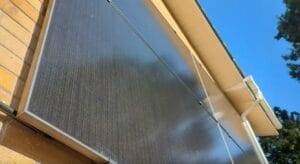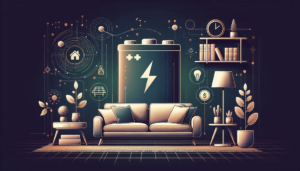The right solar inverter will maximise your solar energy system’s efficiency and safety. It converts DC to AC, manages energy allocation, and includes a BMS.
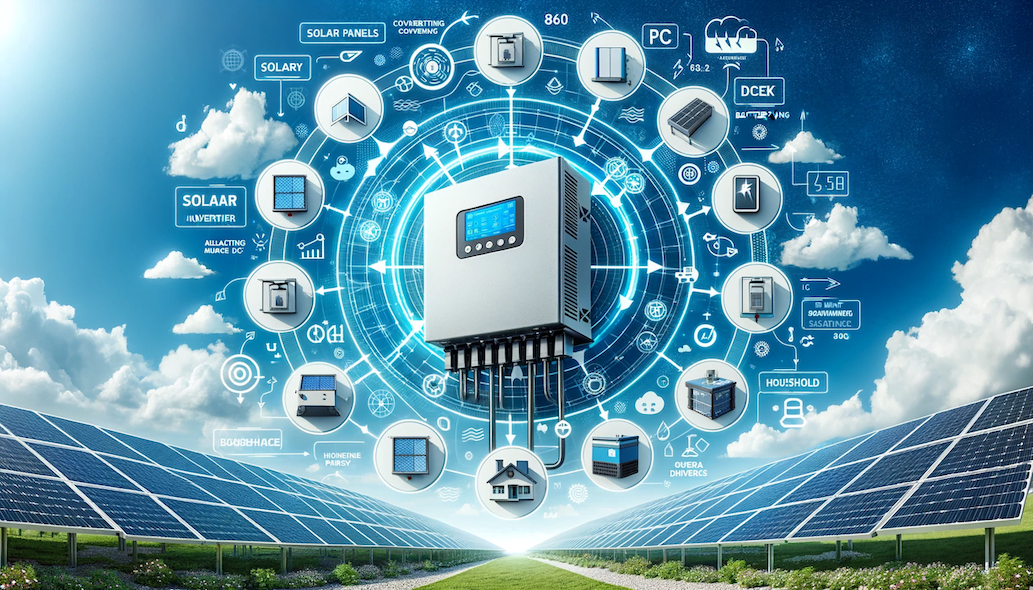
The solar inverter is the ‘conductor’ of your solar energy system, orchestrating the flow and conversion of energy between your solar panels, batteries, home appliances, and the grid. This article will explore the inverter’s role in a typical solar setup, helping you understand its functions and importance.
What is a Solar Inverter?
Typically, a solar inverter is connected to your home, the solar panels and the grid. This is called a grid-tied system. The inverter’s job is to convert Direct Current (DC) from solar panels or battery storage into Alternating Current (AC) for domestic appliances and lighting. The inverter includes intelligent systems for optimising AC production and distributing energy between your panels, battery storage, the grid, and home.
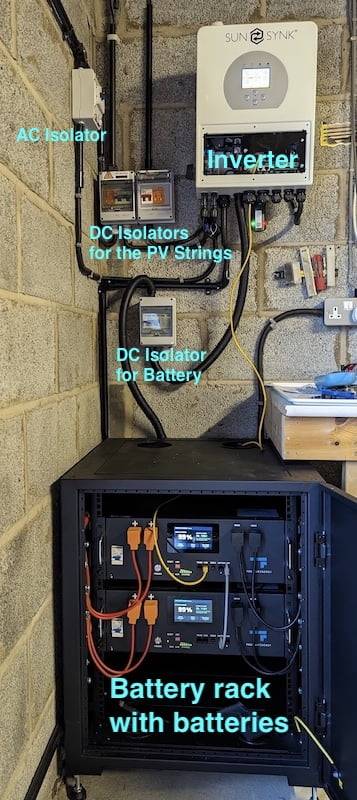
Why do We Need an Inverter?
Our energy grid and homes are designed to use alternating current (AC) electricity. This has proven to be a reliable and safe method over the years. However, solar panels and batteries can only produce or store DC electricity. As a result, they aren’t readily compatible with our homes’ electricity setup.
Converts DC From Solar Panels and Batteries to Usable AC
Converting homes to use DC solely for utilising solar energy is neither economical nor safe compared to using AC. Furthermore, our homes are designed to work with specific AC voltage and frequency. The solar inverter contains electronic circuits and software to make this conversion feel seamless.
Maximum Power Point Tracking (MPPT) for Optimal Energy Conversion
Maximum Power Point (MPP ) tracking is a technique used to find the point on the power-voltage curve where a solar panel or a string of panels generates the most power.
Solar inverters use MPPTs to optimise the power output of the entire string of solar panels. Some inverters contain multiple MPPTs, which serve as separate string inputs. This allows for more versatile installations, such as having east-facing and west-facing solar strings served by the same solar inverter.
Charging and Discharging Batteries
Batteries store DC energy. Inverters in conjunction with Battery Management System (BMS) interface with the battery and manages the charge and discharge of the battery. If a battery is available, the inverter can use the DC from the panels to charge the battery or convert AC from the grid to charge the battery.
This can be useful when flexible energy prices are available , as your inverter can charge the battery with cheaper electricity and supply your home during more expensive periods. In the flexible tariffs’ utilisation use case mentioned above, the inverter stores and automatically executes the logic for when to charge and discharge the batteries, to what level and when to export. On many inverters, this can be configured at time intervals, which allows for complex logic to be built into your system.
Another way to use an inverter is with batteries only. This works well even if no solar panels are installed. The economic sense of this option is conditional on access to suitable flexible tariffs and smart metering.
How Does the Inverter Allocate the Energy?
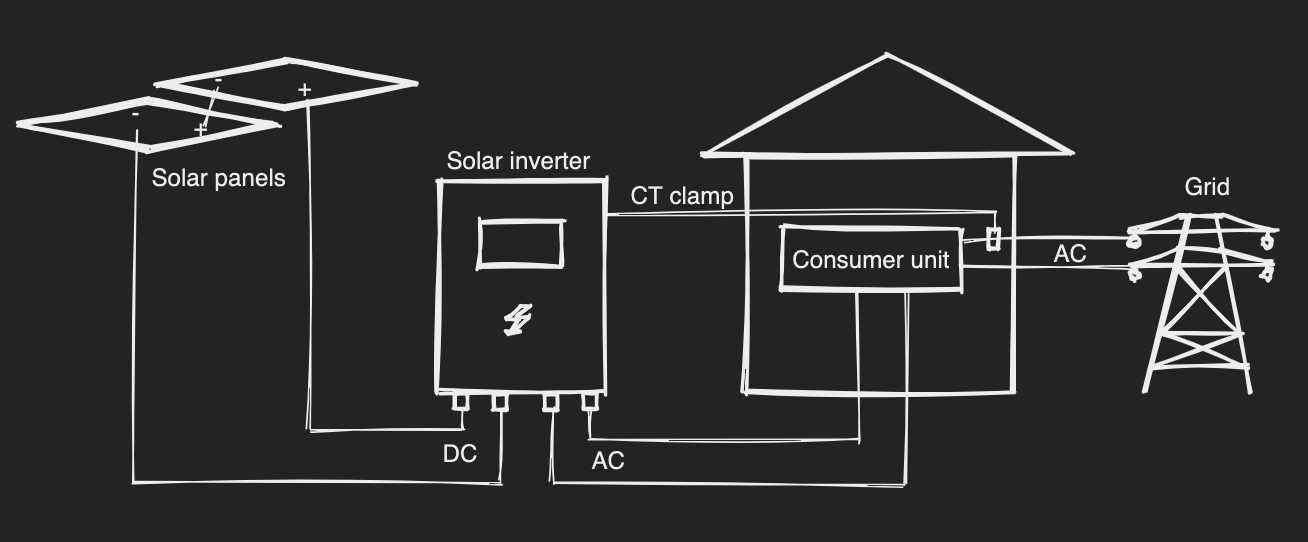
In a grid-tied system, the solar inverter is connected to the solar panels, to battery storage if available and to your home. The inverter performs multiple measurements and adjustments to orchestrate the energy allocation between consumers, such as your home and suppliers, typically solar panels and batteries. The battery can be a consumer and a supplier at different times, making the logic the inverter needs to handle increasingly complex.
The inverter aims to match your home’s electricity consumption. If the inverter cannot provide the necessary power from its energy suppliers, it will give as much as it has available, and your home will draw the rest from the grid. If you only want to supply your home, the inverter can be configured to halt the production of AC when no energy is consumed in your home.
Inverters can be configured to export excess power to the grid or store it in the battery. On most inverters, you can prioritise energy allocation to distribute energy to the most valuable location first. For example, charge the battery first and only then export.
How is the Solar Inverter Connected to Your Home?
Solar inverters have AC ports that connect to your home. The safe and sensible way to do this is by connecting the inverter to a consumer unit.
Inverter producers recommend that solar inverters be connected to a dedicated circuit in your consumer unit. You should have the circuit installed in advance or when connecting the inverter.
Building Regulations Notifiable Work In the UK
If you are in the UK, please note that adding a circuit is subject to building regulations, and you may need to hire a competent person with the correct certification and insurance to perform that work. The good news is that this is a common electrician service, and there is no need for solar specialists to do it.

The price of this service ranges from £250 in common cases to unknown values based on how far away is your shed or garage and other complications such as physical obstructions around the inverter or the distance to it.
Advanced Circuit Breaker is Recommended
A slight peculiarity of these circuits is that it is recommended to use type C RCBO. Some electricians, who have not had to connect an inverter before may consider the type C RCBO an overkill but this is what inverter producers recommend, and you should insist on it.
How do We Ensure We Use Energy From Solar Panels and not From the Grid?
Are additional components, such as intelligent switches, required? The answer is no. Electrical devices in your home consume electricity supplied by your inverter with priority. This is because when a load (such as a light or appliance) is switched on, it will draw power from the most readily available source. In a grid-tied domestic solar system, that source is the solar inverter. As shown in the diagram above, the inverter is connected after the grid entry point in your home. This makes it closer than any powerplant generating electricity delivered through the grid.
How Does the Inverter Know if Energy is Consumed in Your Home?
Solar inverters use information obtained either by a generation meter or a current transformer (CT) clamp connected to the grid entry point of your home. The systems inside the solar inverter take split-second measures and make prompt adjustments to provide the required energy to match your home’s consumption and allocate excess energy based on your configuration.
Conclusion
In conclusion, solar inverters are indispensable in home solar energy systems, adeptly converting and managing energy from solar panels and batteries. They optimise efficiency through MPPTs and safeguard battery health via integrated BMS. Their seamless integration into domestic setups underscores their value in the utilisation of sustainable energy. This comprehensive guide reflects the inverter’s pivotal role in achieving sustainable, efficient solar power in our homes.

